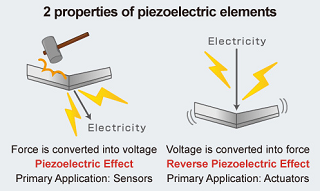Piezoelectric Devices

Franklin Veaux (whose profession is listed as “sexuality educator”??) wrote: Could you build a device that generates electricity from sunlight and vibration? Yes. Would you want to? Unlikely. Piezoelectric generation is extremely inefficient. Such a solar cell would be very expensive to fabricate, but I’d be willing to bet you’d not likely see even a 2% increase in output over solar alone. Yes, you can generate electricity from the vibration of raindrops, but the amount would be incredibly tiny. There’s no sinister conspiracy of Big Oil involved. You can do an experiment yourself–buy a piezo element and a multimeter and see.
I wrote: Franklin nailed it. This comes under the broad heading of an idea that is physically possible but horrifically impractical. If you want to see others that fall under the same banner, check this out: bad ideas | Search Results | 2GreenEnergy.com

Craig,
Obviously we agree on this… harvesting raindrops for energy in any manner other than large-scale hydroelectric dams is just foolishness… But I have not yet ruled piezoelectrics out entirely as a useful means of harvesting energy.
In extremely high-traffic walkways, such as public transportation terminals, the sidewalks on the National Mall, the sidewalks at the 9/11 memorial, etc… using piezoelectrics embedded into a circuitboard-style walkway should be able to recoup the investment via a combination of much more durable walkways (less maintanence costs over 10 years) and recovered energy from human traffic – even at a low efficiency.
I never really understood why the matter wasn’t at least explored in cities with good public transportation/high numbers of walkers. Granted it’s small potatoes, but any case where a strong net economic gain could come from renewable investments (prior to consideration of externalities), these things should be exploited.
I don’t know enough about sidewalk maintanence costs to have an estimate of how much a city with decent walking traffic might save… but I think there’s potential there in very high traffic areas.